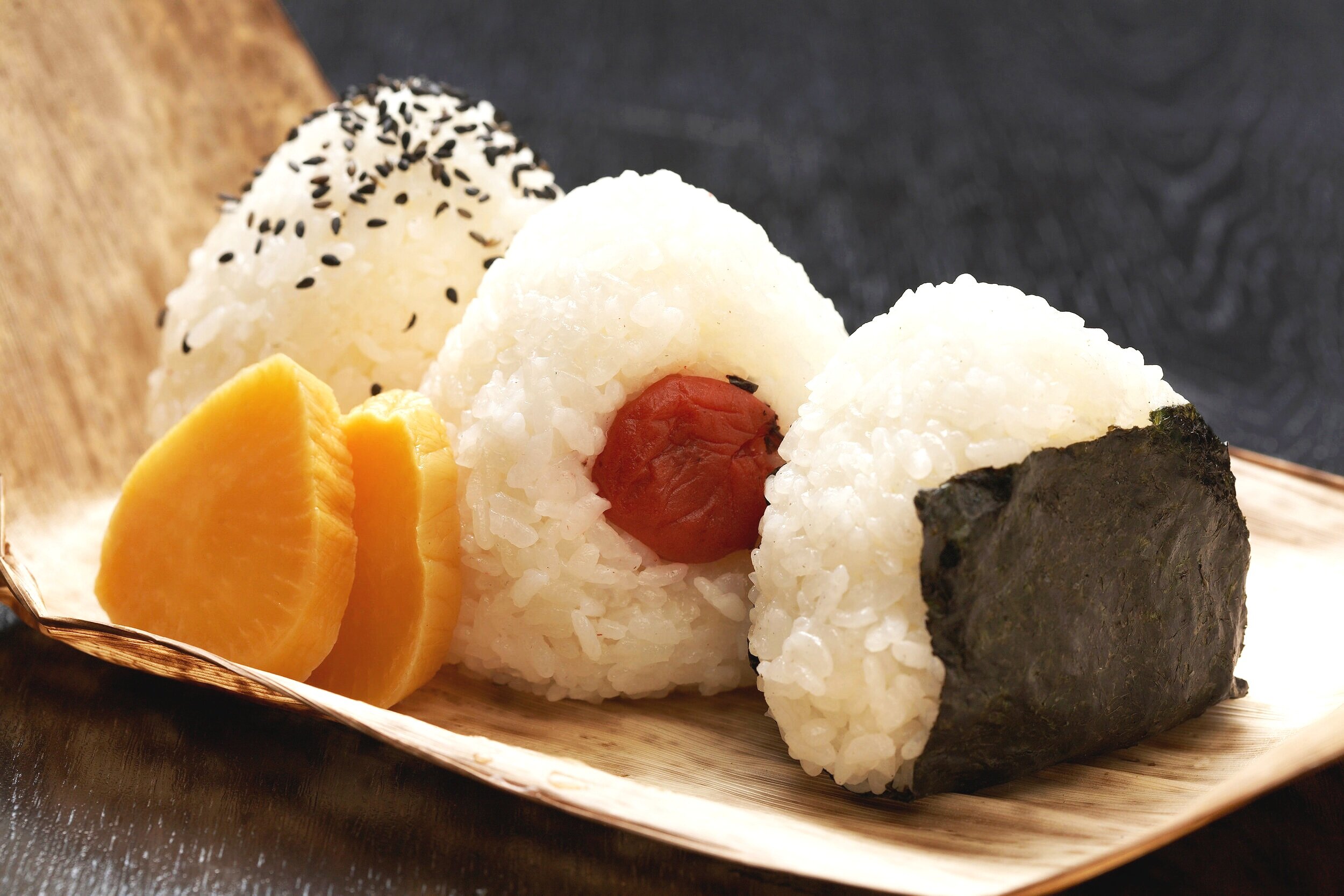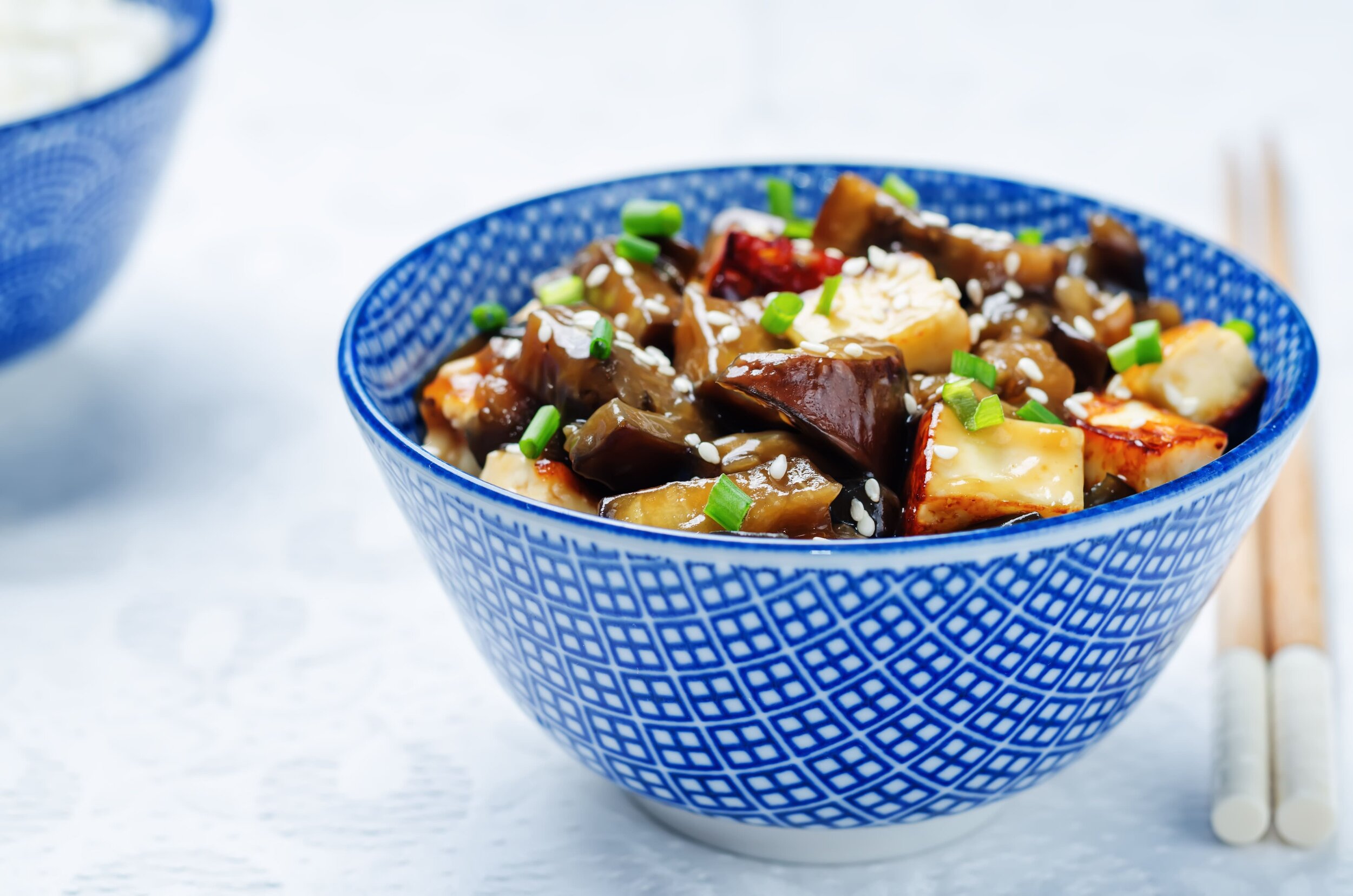11 Healthy Vegan Japanese Foods (With Weight Loss Tips)
Japanese food comes in a wide variety of different meats, veggies, and dessert.
However, it can be difficult to find some foods that are purely plant based and fit for a Vegan diet.
Japanese cuisine focuses on taste and presentation.
There’s a reason why Japanese food is so popular around the world and is widely sought after.
In this article we will be discussing some Vegan foods but also the ones that are healthiest and are great for both dieting and staying fit.
Whether you’re making it at home or find the dishes somewhere around your city, You’ll be able to find out about what these foods are and their nutrition facts.
We’ll also be discussing some tips on diet and what you can do to stay fit in your day to day life.
Let’s get into these 11 Healthy Vegan Japanese Foods and learn more about the amazing foods that Japanese cuisine has to offer.
RECENT POSTS
11. Nameko Mushroom Miso Soup
Miso is made from fermenting soybeans in salt which gives the ingredient its staple flavor and depth.
It’s also one of Japan’s star ingredients and is used in so many of their dishes. Did I also mention that it’s super delicious?
If you’ve ever had Japanese food then you’re more than aware of how delicious this simple soup is served.
It’s even better, however, when you add Nameko Mushrooms and tofu in the mix as it adds a nice little bite that can serve as a meal on its own.
Nameko Mushroom Miso Soup is made with miso paste, Nameko Mushrooms, dashi, and water.
Pretty simple and entirely vegan. Let’s take a look at the nutrition facts and what goes into a typical Miso Soup dish.
Here is a recipe you can use to make it for yourself.
https://misosoup.site/nameko-mushrooms-miso-soup-recipe/
For every 1.5 grams of fat, there are 3 grams of carbs and 3 grams of protein.
These are very balanced macronutrients and make for a very good meal.
The tip here is to add this to any rice or tofu dish. It’s amazing when paired with another dish that can soak up its savory flavors.
10. Umeboshi Onigiri
Onigiri is a classic Japanese food and is portrayed all throughout their media.
I’ve grown up watching shows like Pokemon, Naruto, and One Piece so this dish was always something that came up all throughout the show.
What’s great about Umeboshi Onigiri is that it’s completely vegan and only uses plant based ingredients.
It’s super easy to make and easily accessible so go out and get some of these the next time you’re craving some Japanese food! Here is a recipe for you to make it at home.
https://www.theartfulappetite.com/umeboshi-onigiri-japanese-pickled-plum-rice-balls/
Now let’s take a look at the ingredients and see what goes inside a typical onigiri dish.
For every 2 grams of fat, there are 49 grams of carbs and 9 grams of protein.
Not bad considering how delicious these rice balls are and, for 9 grams of protein, it’s totally worth the eat.
Our tip with this dish, however, is to try to find some more fibers.
White rice doesn’t really contain too much so make sure you add some veggies as a side dish to complement the meal!
9. Hiyayakko (Japanese Chilled Tofu)
We have another traditional Japanese food on the list which is a chilled tofu dish that contains a ton of umami and savory flavors.
Although it seems pretty simple, the dish is actually extremely complex and carries a ton of flavors that you wouldn’t think of as you look at it. It’s the perfect portrayal of “don’t judge a book by its cover”.
It’s a dish made from soy sauce, ginger, wasabi, scallions, dried bonito flakes and topped with a huge variety of different ingredients such as corn, plum paste, or dried seaweed.
Here is a recipe you can try and make in the safety of your own home.
https://www.justonecookbook.com/japanese-tofu-cold-tofu-hiyayakko/
Let’s take a look at what goes inside a typical Hiyayakko dish.
For every 5 grams of fat, there are 4 grams of carbs and 14 grams of protein.
This is an amazing meal to have as a vegan since protein can be so hard to get from plant based foods.
14 grams of protein for every 5 grams of fat is an amazing ratio and can even be compared to something like fish.
Our tip here is to add some veggies or some rice to this dish.
It’s very savory and is best when paired with something that can take the edge off of the tofu.
8. Kappamaki (Cucumber Roll)
Super simple but super delicious. Kappamaki is a sushi roll that contains cucumbers and sushi rice.
It’s sweet, savory, and has such a fresh flavor whenever you eat this. The best part about this, in my opinion, is the crunch factor.
Cucumber is such a versatile vegetable and is great when made creatively like these types of rolls.
The ingredients are super simple: sushi rice, seaweed, and cucumbers.
They’re super easy to get a hold of as most sushi places will have this as an option.
If you want to make it at home for a fun project, however, here is a recipe where you can try to make these at home.
https://www.thespruceeats.com/kappamaki-2031506
Let’s take a look at the nutrition facts for a typical cucumber roll.
There are 0 grams of fat for every 4 grams of carbs and 1 gram of protein.
It’s a pretty standard dish but is delicious and filling so we totally recommend eating this.
Our tip is to eat this alongside dishes like number 7 as it lacks protein and, rarely, lacks calories coming from fat as well.
If you make this at home, make use of all the cucumber as there will be leftovers.
There are so many routes you can take when enjoying this dish so have fun with it and make sure to try it out next to you crave some sushi!
7. Eggplant & Tofu Yakitori with rice
Yakitori is a fun and exciting concept that Japanese restaurants implement since there is usually a chef that cooks the meal right in front of you in a bar setting.
However, most of Yakitori comes in the form of meats which is what we don’t want in a vegan diet.
The good part is that Yakitori is versatile and can be eaten with just veggies such as eggplant, green peppers, and tomatoes.
There is also a tofu version that you can eat and enjoy which is both delicious and packed with nutrients. Here is a recipe so you can make it at home.
https://www.house-foods.com/recipes/yakitori-style-tofu-skewers
Let’s take a look at the nutrition facts and what goes into a typical Tofu Yakitori dish.
For every 9 grams of fat, there are 30 grams of carbs and 16 grams of protein.
It’s a pretty amazing dish as it offers a lot of protein and not many carbs at all.
Our tip here is to eat the skewers with some more veggies as fiber is what it lacks.
Greens are always a good option when eating something a little heartier.
So make sure to eat those fibers and get some more delicious flavors on that plate!
6. Nimono-Japanese Simmered Vegetables
Usually served as a side dish, Nimono-Japanese Simmered Vegetables is a delicious medley of veggies that consist of bamboo, mushroom, carrots, potatoes, daikon, shiitake mushrooms, tofu, setain, and so much more.
There is really no end to what you can put in there. Here is a recipe for you to try if you want to make some simmered veggies at home.
Let’s take a look at the nutrition facts and what goes into a typical Nimono-Japanese Simmered Vegetable dish.
For every 1.5 grams of fat, there are 16 grams of carbs and 8 grams of protein.
This is great as there is a good balance between all three macronutrients. The highlight of this meal, however, is the fiber you receive from it.
Fiber is amazing for dieting as it allows us to be more satiated when eating at a deficit of calories.
Simply put, you need to add fibrous foods when you are eating less as it fills you up and aids in digestion and hunger.
Our tip here is to eat this as a side dish and to pair it with a tofu dish since some more protein is always great to have.
5. Vegetable Soba
Soba is one of the tastiest noodle dishes out there and is one of my favorite cold noodle dishes.
It can be eaten hot or cold but I prefer it cold as it offers a really refreshing flavor and is best eaten when there’s a hot day out.
Let’s take a look at what goes inside Soba.
The broth, in my opinion, is what makes the dish so good and so versatile. It’s a mixture of light and dark soy sauce with the addition of sugar and sesame oil.
There are a ton of different vegetables that come with the dish such as carrots, mushrooms, bell peppers, scallions and more. Here is a recipe that you can use if you want to try making this at home.
https://goop.com/recipes/vegetable-soba-noodles/
Let’s take a look at the nutrition facts and what goes inside a typical Vegetable Soba mix.
For every 15 grams of fat, there are 24 grams of carbs and 7 grams of protein.
Not bad at all since this is actually a very low calorie count than most noodles you can find out there.
With 7 grams of protein every serving of Soba noodles, this is a great option if you’re looking for a healthier alternative to any noodle dish you can find out there.
Our tip here, once again, is to add some high protein items such as tofu or soy beans as you can always benefit from having more protein in your diet.
4. Eggplant Rice Bowl
Eggplant is delicious when stir fried as it becomes creamy and slightly chewy all at the same time.
What’s even better about this dish is the marinade that surrounds the eggplant.
It’s made from mirin, soy sauce, apple cider vinegar, and sugar which makes for a really amazing flavor that goes beyond your typical eggplant dish.
Here is a recipe that we found so you can make it on your own at home.
http://theveganronin.blogspot.com/2008/09/eggplant-rice-bowl.html
Let’s take at the nutrition facts and see what goes inside a typical Eggplant Rice Bowl.
For every 5 grams of fat, there are 43 grams of carbs and 7 grams of protein.
This is a great option to eat as a meal as it is high in protein and low in fats.
It’s an amazing meal to eat if you’re someone who loves rice bowls and hearty dishes.
3. Vegetable Tempura
Tempura is another classic dish from Japan made from frying different types of vegetables in batter and dipping them within a soy based sauce.
It’s an interesting take on vegetables and gives a great twist for anyone looking to eat something new and exciting.
Many recipes use egg to make the batter but you can just use a mixture of oil, flour, water, and sugar if you’re looking to replace any animal products.
The best part about this dish is the variety of vegetables that go great with the batter and tempura sauce.
My favorite has to be the fried sweet potato and pumpkin.
When battered, these two make some really awesome flavors that leave you wanting to eat 10 more pieces when you’re already stuffed.
It’s pretty awesome. Here is a recipe if you want to try making this at home.
https://www.justonecookbook.com/vegetable-tempura/
Let’s take a look at the calorie count and what goes into a typical Vegetable Tempura dish.
For every 4 grams of fat, there are 4 grams of carbs and 1 gram of protein.
Our tip here is to either eat this as a side dish or as a snack between meals.
You best bet is to get some more protein by having some other raw dishes or adding tofu or beans into the mix somehow.
2. Kinoko Gohan-Japanese
This dish is simplicity at its best and is a great dish to eat on the weekdays as a regular meal.
It’s loaded with flavor and is packed with nutrients. Just like many other Japanese dishes, the star in this ingredient is definitely the mirin as it provides a sweet and savory flavor to the
flavorful shiitake mushrooms presented in this dish. Here is a recipe so you can make it at home. It’s super simple and can be made on the go.
https://www.japanesecooking101.com/kinoko-gohan-recipe/
Let’s take a look at its nutrition facts and its calorie content.
For every 2 grams of fat there are 71 grams of carbs and 6 grams of protein.
A little high on the carbs but its basic and simple nature allows for the addition of other vegetables and proteins such as tofu.
It’s a really great pair with the tofu dishes on this list and is a dish that is accessible and simple to make.
I grew up eating this dish and it always paired well with anything I placed with it. Get creative and see what other dishes you can add to get the best flavors and nutrition
1. Agedashi Tofu
Taking our number one spot for this list has to be Agedashi Tofu.
It’s an amazing Japanese dish that let’s tofu shine as it adds a crazy amount of flavors and a crunch factor to the silky smooth tofu.
The tofu is battered in corn starch and is fried with vegetable or peanut oil.
It is then served with a mirin and soy sauce based sauce and is topped with shredded radishes and green onions.
It’s a flavor bomb within every bite and there is nothing quite like the texture and taste of it.
if you’re looking for a different and exciting tofu dish, then this is definitely the choice for you as it really takes tofu to another level that exceeds your typical asian tofu dish.
Here is a recipe for you to try and make at home.
https://www.chopstickchronicles.com/agedashi-tofu/
Let’s take a look at the nutrition facts and what goes inside a typical Agedashi Tofu dish.
For every 3 grams of fat, there are 12 grams of carbs and 12 grams of protein.
Not only is this dish delicious and unique, it’s also very healthy and is packed with a lot of protein. It’s the best tofu dish that I’ve ever eaten personally and is definitely an option for both vegans and non vegans.
Our tip with this dish is to eat it to your heart’s content because there is really nothing quite like it!
There It Is!
11 Vegan Japanese dishes that are healthy and delicious.
If you’re looking for more blogs on healthy delicious asian foods, then check out our other articles where we dive into our recommendations.
RECENT POSTS
The Asian Weight Loss Cookbook
The 15 Fat Burning Meals Cookbook features our favorite recipes that you can use to get closer to your fitness goals.
Become your own personal trainer with the guidance of this book and make this the year you achieve your insurmountable fitness goals.
PHILLIP PAK
Phillip Pak is a fitness expert who has been training clients for 6 years. Throughout his fitness journey, Phill has done it all when it comes to diet and nutrition. He is now the owner of Aspire Fitness Walnut where his main goal is to help those who are seeking to find the best version of themselves. Phillip is also a NASM Certified Nutrition Coach (CNC) and a NASM Certified Personal Trainer (CPT).
































